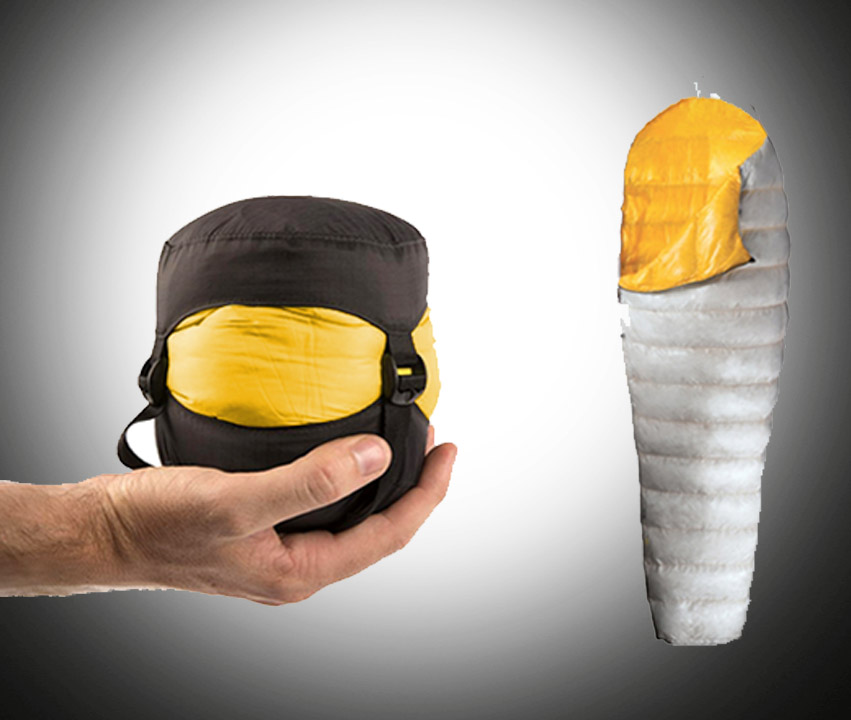How to Store Sleeping Bags? To store sleeping bags, clean and dry them thoroughly before rolling them up and storing them in a cool, dry place. Storing sleeping bags properly is essential to maintain their quality and prolong their lifespan.
Whether you’re an occasional camper or a seasoned outdoor enthusiast, following the correct storage method will ensure your sleeping bag stays in top condition for years to come. After using the sleeping bag, it’s crucial to clean and dry it thoroughly to remove any sweat, dirt, or moisture.
Once clean, roll the sleeping bag tightly, starting from the foot end, to eliminate any air pockets. Store the rolled sleeping bag in a cool and dry place, such as a cotton storage bag or a breathable container, to prevent mold, mildew, or other damage.
By storing your sleeping bag correctly, you can ensure that it will be ready for your next adventure.
Storing Sleeping Bags Correctly
Importance of proper storage: Properly storing your sleeping bags is essential to maintain their quality and lifespan. By taking a few simple steps, you can ensure that your sleeping bag lasts for many camping adventures to come.
First, always make sure to clean your sleeping bag before storing it. Dirt, sweat, and oils can deteriorate the fabric over time, so be sure to follow the manufacturer’s instructions for cleaning. Dry your sleeping bag thoroughly before packing it away to prevent the growth of mold and mildew.
Next, it’s important to choose the right storage location. Avoid storing your sleeping bag in extreme temperatures or direct sunlight, as this can cause damage to the materials. A cool, dry place such as a closet or storage bin is ideal.
When packing your sleeping bag, avoid compressing it too tightly. Over-compression can damage the insulation, reducing its ability to keep you warm. Instead, loosely roll or fold the sleeping bag and store it in a breathable bag or stuff sack.
Remember to periodically check on your stored sleeping bags to ensure they remain in good condition. By following these tips, you can extend the lifespan of your sleeping bags and continue to enjoy comfortable nights under the stars.
Choosing The Right Storage Space
Storing your sleeping bags properly is crucial to maintain their quality and longevity. When choosing a storage space, there are a few considerations to keep in mind. Temperature and humidity control is essential to prevent the growth of mold and mildew.
Look for an area that is well-ventilated and where the temperature remains relatively stable throughout the year. Think about accessibility and safety.
Select a storage area that is easily accessible so you can retrieve your sleeping bags whenever needed. It’s also important to ensure the space is secure and protected from potential damage or theft.
By taking these considerations into account, you can ensure that your sleeping bags are stored in an optimal environment, extending their lifespan and keeping them in top condition for your next outdoor adventure.
Preparing Your Sleeping Bag
Discover the best way to store your sleeping bag with these expert tips. Keep it clean and dry, roll instead of folding it, and store in a breathable bag to extend its lifespan. Properly preparing your sleeping bag ensures it’s ready for your next outdoor adventure.
Preparing Your Sleeping Bag
To store your sleeping bags properly, it is essential to clean them before storage. This involves removing any dirt, debris, or stains. Follow the manufacturer’s instructions for cleaning or use a mild detergent. Once cleaned, allow your sleeping bag to thoroughly dry to prevent mold and mildew.
Hang it outside or in a well-ventilated area until completely dry. Next, carefully inspect your sleeping bag for any damage and wear. Look for tears, loose stitching, or broken zippers. These issues should be repaired before storage.
It is also important to check for any wear and tear on the insulation or waterproofing. If necessary, reapply a waterproofing treatment. Taking these steps will prolong the lifespan of your sleeping bag and ensure it is ready for future adventures.
How To Store Sleeping Bags Safely?
When it comes to storing sleeping bags, there are a few options to consider. Hanging or laying the sleeping bag flat are two common methods, and each has its pros and cons. Hanging the sleeping bag can help maintain its loft and keep it uncompressed, but it requires a lot of space.
On the other hand, laying the sleeping bag flat can help save space, but it may cause the insulation to compress over time. Using the right storage containers is crucial. Opt for breathable containers that allow air circulation and prevent moisture build-up.
Avoid storing your sleeping bag in plastic bags or airtight containers as they can trap moisture and lead to mildew or odor development. Alternatively, you can use a cotton or mesh storage sack, which provides ventilation and keeps your sleeping bag well-ventilated during storage.
Properly storing your sleeping bag is essential for maintaining its longevity and performance. By following these guidelines, you can ensure that your sleeping bag stays in prime condition between camping trips.
Avoiding Common Storage Mistakes
One of the most important aspects of storing sleeping bags is to avoid long-term use of compression sacks. While these sacks can be useful for reducing the size of the sleeping bag during transportation, they can compress the insulation over time, reducing its effectiveness.
It’s best to store the sleeping bag in a larger breathable storage bag or cotton pillowcase to allow the insulation to fully loft. Sleeping bags should be stored in a cool, dry place away from direct sunlight and heat sources.
Exposure to extreme temperatures, particularly heat, can damage the fabric and insulation, causing it to lose its loft and insulation properties. It’s best to choose a storage location that is well-ventilated and free from moisture to prevent mold or mildew growth.
When storing sleeping bags, it’s essential to protect them from critters such as rodents or insects. These pests can gnaw through the fabric, leaving small holes or compromising the integrity of the sleeping bag. To prevent critter access, store the sleeping bags in airtight containers, or use mothballs or dryer sheets as natural deterrents.

Seasonal Sleeping Bag Care
Properly caring for your sleeping bags can significantly extend their lifespan and ensure they are ready for your next camping adventure. One important aspect of seasonal sleeping bag care is periodic airing out and fluffing.
This involves removing your sleeping bags from storage and giving them a good shake to help restore their loft. It’s also essential to check for needed repairs such as tears or broken zippers before storing them away. Another crucial aspect is adjusting storage with changing seasons.
During warmer months, it’s best to store your sleeping bags in a cool, dry place to prevent mold and mildew growth. In contrast, during colder months, consider storing them in a slightly warmer spot to help preserve their insulation.

Retrieving Sleeping Bags For Use
Storing sleeping bags properly ensures their longevity and usability. Follow these simple steps to store your sleeping bags: clean and dry them thoroughly, roll and pack them in a breathable bag or stuff sack, avoid compression for extended periods, and store them in a cool, dry place away from moisture and pests.
| Retrieving Sleeping Bags for Use |
| After prolonged storage, it is important to inspect your sleeping bag before using it to ensure that it is in good condition. Check for any signs of damage such as tears, holes, or broken zippers. Pay close attention to the seams as these areas are more prone to wear and tear. If there are any visible damages, consider repairing or replacing the sleeping bag. |
| Refreshing the bag before use |
| Prior to your outdoor adventure, it is recommended to refresh your sleeping bag. This can be done by airing it out in a well-ventilated area to eliminate any musty odors that may have developed during storage. Additionally, you can lightly shake or fluff the bag to restore its loft and ensure optimal insulation. |
| Prepping for upcoming trips |
| Before embarking on your next trip, take some time to prepare your sleeping bag. Make sure to store it in a clean, dry place to prevent any mildew or moisture damage. Consider using a storage sack or compression bag to minimize its size and make it easier to transport. It is also advisable to keep your sleeping bag away from direct sunlight as it can cause fading or degradation of the materials. |
Frequently Asked Questions On How To Store Sleeping Bags
What Is The Best Way To Store A Sleeping Bag?
Store your sleeping bag by first cleaning and drying it thoroughly. Then, roll it up tightly, avoiding folding to prevent permanent creases. Place it in a breathable storage bag and avoid storing it compressed for long periods to maintain its insulation and loft.
Is It Ok To Keep Sleeping Bag Compressed?
Yes, it is not advisable to keep a sleeping bag compressed for a long time as it can damage the insulation and reduce its ability to keep you warm. Always store your sleeping bag in a loose and uncompressed state to maintain its performance and extend its lifespan.
How Do You Fold And Store Sleeping Bags?
To fold and store a sleeping bag, start by laying it flat on a clean surface. Roll it tightly from one end to the other, removing any air. Then secure it with straps or a compression sack to keep it compact.
Store in a dry and cool place to maintain its quality.
Is It Better To Roll Or Stuff A Sleeping Bag?
It is better to roll a sleeping bag as it helps maintain its shape and saves storage space. Plus, rolling ensures the bag stays compressed for easy carrying.
Conclusion
To wrap it up, storing sleeping bags properly is essential for their longevity and performance. By following the tips provided in this blog post, such as cleaning and drying them thoroughly before storage, choosing the right storage option, and protecting them from moisture and pests, you can ensure your sleeping bags remain in top condition for future adventures.
Taking these simple steps will not only extend the lifespan of your sleeping bags but also save you money in the long run. Happy camping!

Welcome to Old Money Bag, your premier destination for the finest and most exquisite luxurious bags. Owned and curated by Blog: Leslie Palacio, our website is dedicated to bringing you a collection of handpicked, high-end bags that exude elegance and sophistication.

